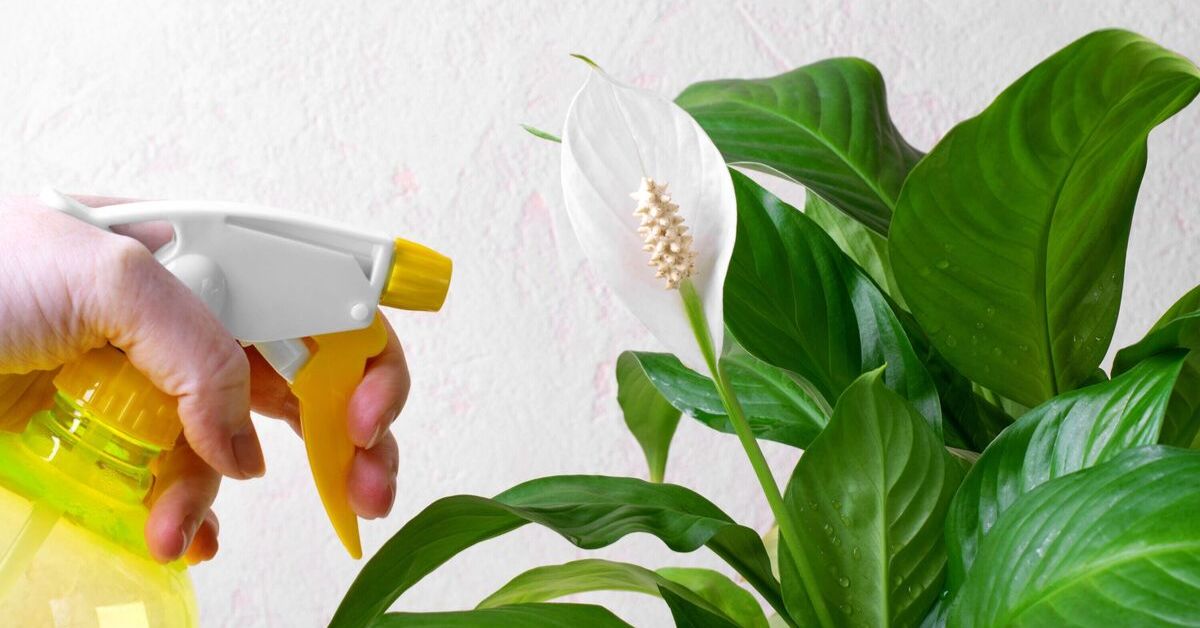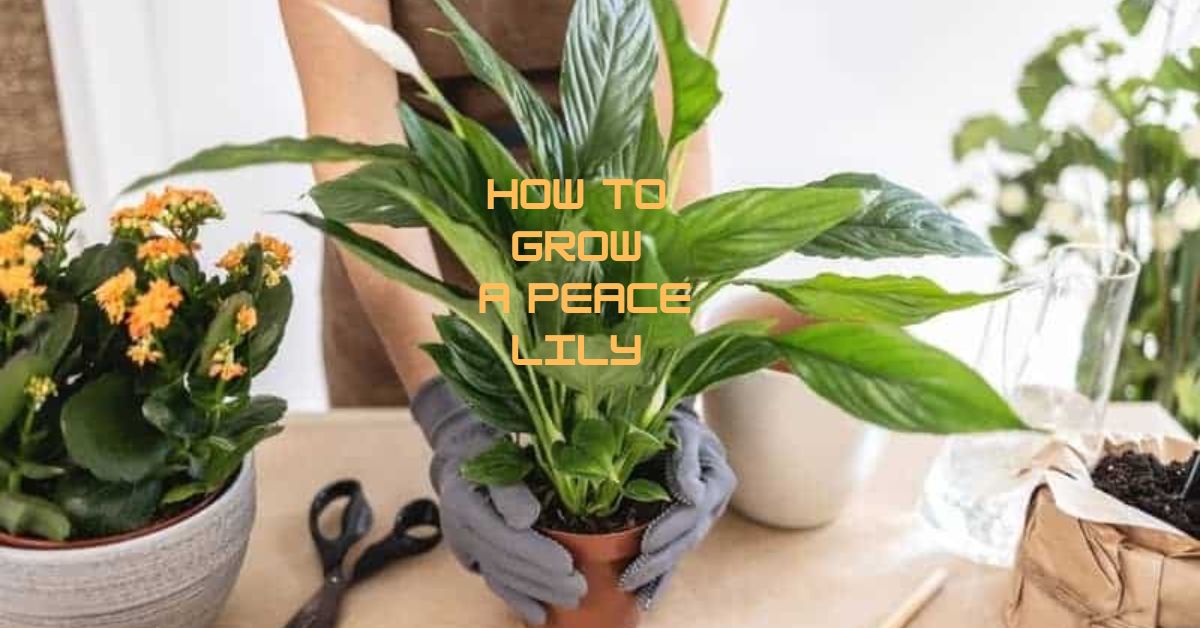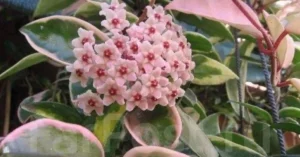Peace lilies rank among the foremost adored houseplants for great reason. These rich wonders gloat shiny green clears out and shocking white blossoms that’ll brighten any corner of your domestic. You do not require a green thumb to succeed with these excusing plants.
Peace lilies are essentially bulletproof for fledglings. These tropical locals flourish in moo light and really tell you when they require water by hanging marginally. Furthermore, they’re characteristic discuss purifiers that’ll offer assistance clean your indoor environment whereas including a touch of modernity to any room.
Developing a peace lily isn’t rocket science. With fair some basic care tips, you’ll have a flourishing plant that rewards you with dazzling sprouts year-round. Let’s jump into everything you wish to know around keeping these staggering plants cheerful and sound in your domestic.
Choosing the Right Pot
- Select pots with drainage holes to prevent waterlogged soil
- Choose containers 1-2 inches larger than the current root ball
- Terra cotta pots work well because they allow soil to dry between waterings
- Plastic pots retain moisture longer, perfect for forgetful waterers
- Avoid pots that are too large as peace lilies prefer being slightly root-bound
- Ensure the pot depth accommodates the plant’s extensive root system
- Heavy ceramic pots provide stability for larger, top-heavy plants
- Replace pots every 2-3 years or when roots grow through drainage holes
Best Soil for Peace Lily
Peace lilies thrive in well-draining potting mix that retains some moisture. Standard potting soil works perfectly, but avoid heavy garden soil that stays soggy. Good drainage prevents root rot, the biggest killer of indoor peace lilies.
Read More : Top Tips for Caring for Your Hydrangea Tree
Mix in some perlite or bark chips for extra drainage if your soil seems too dense. The ideal growing medium feels moist but never waterlogged. Repot every 2-3 years or when roots become crowded in the current container.
Where to Place Your Peace Lily
Peace lilies prefer bright, indirect light but tolerate low-light conditions better than most houseplants. East or north-facing windows give culminate lighting without unforgiving coordinate sun. As well much coordinate daylight sears the clears out and blurs their wealthy green color.
Dodge setting your peace lily in totally dull corners or austere rooms. Whereas they survive in moo light, they won’t sprout without satisfactory brightness. A spot about 6-8 feet from a sunny window gives them the gentle light they crave. How to Water Properly
Humidity and Temperature Needs
Peace lilies adore warm, muggy conditions similar to their tropical country. Keep temperatures between 65-80°F for ideal development. These plants abhor cold drafts and sudden temperature changes, so dodge putting them close discuss vents or drafty windows.
Boost stickiness around your peace lily amid dry months. Fog the clears out softly or put a water-filled stone plate adjacent. You’ll be able too bunch plants together to form a normally muggy microclimate. Low humidity causes brown leaf tips and stunted growth.
Feeding Your Peace Lily

Bolster your peace lily month to month amid spring and summer with weakened fluid fertilizer. Utilize a adjusted houseplant nourishment at half quality to dodge burning the roots. These plants do not require overwhelming bolstering like open air plant assortments.
Skip fertilizing amid drop and winter when development moderates down. Over-fertilizing causes more hurt than great, driving to intemperate foliage and less blossoms. Signs of as well much fertilizer incorporate brown leaf edges and salt buildup on soil surface.
Cleaning and Pruning
Tidy routinely gathers on peace lily takes off, blocking daylight and lessening photosynthesis. Wipe clears out delicately with a soggy cloth each few weeks. This straightforward errand keeps your plant looking dynamic and makes a difference it breath appropriately.
Remove spent blooms and yellowing leaves promptly with clean scissors. Cut stems back to the base to encourage new growth. Pruning also prevents your plant from wasting energy on dying foliage and redirects nutrients to healthy parts.
Common Problems and Fixes
| Problem | Cause | Fix |
| Brown leaf tips | Low humidity or fluoride in water | Increase humidity with pebble tray; use distilled water |
| Yellow leaves | Overwatering or natural aging | Reduce watering frequency; remove old yellow leaves |
| Drooping leaves | Underwatering or root bound | Water thoroughly; check if repotting is needed |
| No blooms | Insufficient light or overfertilizing | Move to brighter spot; reduce fertilizer |
| Black leaf spots | Fungal infection from overwatering | Improve drainage; remove affected leaves |
| Stunted growth | Poor soil or nutrient deficiency | Repot with fresh soil; resume monthly feeding |
| Pest infestation | Spider mites or aphids | Wipe leaves with soapy water; increase humidity |
| Wilting despite moist soil | Root rot from overwatering | Check roots; repot in fresh, well-draining soil |
| Pale, faded leaves | Too much direct sunlight | Move to location with indirect light |
| Slow growth | Low light or cold temperatures | Relocate to warmer, brighter area |
How to Make It Bloom
- Peace lilies need bright, indirect light to produce their signature white flowers
- Remove spent blooms immediately to encourage new bud formation
- Maintain consistent moisture without overwatering the soil
- Feed monthly during growing season with balanced liquid fertilizer
- Keep humidity levels high around the plant for optimal blooming
- Ensure temperatures stay between 65-80°F consistently
- Allow slight root binding as crowded roots often trigger flowering
- Be patient – young plants may take 1-2 years before first blooms appear
Frequently Asked Questions
How often should I water my peace lily?
Water when the top inch of soil feels dry, typically once a week. Peace lilies will droop slightly when thirsty, making it easy to know when they need water.
Can peace lilies survive in low light?
Yes, peace lilies tolerate low light better than most houseplants. However, they need some bright, indirect light to bloom and thrive optimally.
Are peace lilies toxic to pets?
Peace lilies are mildly toxic to cats and dogs if ingested. Keep them out of reach of curious pets to avoid stomach upset or mouth irritation.
Why isn’t my peace lily blooming?
Lack of adequate light is the most common reason. Move your plant to a brighter location with indirect sunlight and ensure consistent care habits.
How big do peace lilies get indoors?
Most indoor peace lilies reach 1-3 feet tall and wide. Larger varieties can grow up to 4 feet with proper care and adequate space.
Conclusion
Developing a peace lily effectively comes down to understanding its essential needs and giving steady care. These versatile plants excuse minor botches whereas fulfilling you with dazzling foliage and rich white sprouts. Keep in mind that persistence pays off with peace lilies since they take time to set up and develop.
The key to peace lily victory lies in finding the correct adjust of light, water, and stickiness. Once you set up a schedule that works for your particular environment, these plants essentially care for themselves. They’ll indeed communicate their needs by hanging when parched or creating brown tips when stickiness drops as well moo.
With the information you’ve picked up approximately legitimate situation, watering procedures, and investigating common issues, you’re well-equipped to appreciate a long time of excellence from your peace lily. These immortal houseplants proceed to be favorites since they combine staggering appearance with beginner-friendly care necessities.




